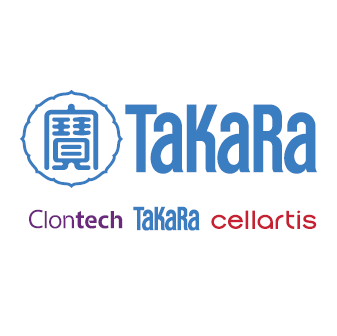RetroNectin Recombinant Human Fibronectin Fragment
RetroNectin Recombinant Human Fibronectin Fragment
RetroNectin Recombinant Human Fibronectin Fragment
RetroNectin reagent is a 63-kD fragment of recombinant human fibronectin fragment (also referred to as rFN-CH-296) that enhances the efficiency of lentiviral- and retroviral-mediated gene transduction. This is particularly important for hematopoietic cells and other hard-to-transfect cell types. When coated on the surface of containers such as culture dishes, petri dishes, flasks or bags, RetroNectin significantly enhances virus-mediated gene transduction into mammalian cells. This enhanced transduction is thought to result from the colocalization of virus particles and target cells on the molecules of RetroNectin. Viral particles bind RetroNectin via interaction with heparin-binding domain II, and target cells bind mainly through the interaction of the cell surface integrin receptor VLA-4 with the fibronectin CS1 site.
Overview
- Enhanced gene transfer efficiency for retroviral or lentiviral transduction of suspension cells, hematopoietic stem cells, and other hard-to-infect cell types
- Less toxicity than other commonly used transduction enhancers, including polybrene and protamine
- Fully recombinant peptide
- The efficiency of T cell (CD8+) expansion can be significantly increased in the presence of RetroNectin reagent
Applications
- Enhanced retroviral or lentiviral mediated transduction of cells that express VLA-4 or VLA-5 (including many hematopoietic cell types)
- In vitro T-cell expansion of CD8+ cells
- RetroNectin reagent has been used in over 40 clinical trials
- Research-grade RetroNectin (Cat. # T100A/B; T110A): For research use only. Not for use in diagnostic or therapeutic procedures.
RetroNectin reagent is a recombinant human fibronectin fragment that contains three functional domains: the cell-binding domain (C-domain), the heparin-binding domain (H-domain), and the CS-1 sequence

RetroNectin reagent is a recombinant human fibronectin fragment that contains three functional domains: the cell-binding domain (C-domain), the heparin-binding domain (H-domain), and the CS-1 sequence. RetroNectin Reagent enhances lentiviral- and retroviral-mediated gene transduction by aiding the colocalization of target cells and viral particles. Specifically, virus particles bind RetroNectin Reagent via interaction with the H-domain, and target cells bind mainly through the interaction of cell surface integrin receptors VLA-5 and/or VLA-4 with the fibronectin C-domain and CS-1 sites, respectively. By facilitating close physical proximity, RetroNectin Reagent can enhance viral-mediated gene transfer to target cells expressing integrin receptors VLA-4 and/or VLA-5.
Examples of retroviral transduction of neor into various cell types in presence or absence of RetroNectin reagent

Examples of retroviral transduction of neor into various cell types in presence or absence of RetroNectin reagent. Top panel, transfection of c-kit positive Murine Bone Marrow Cells; middle panel, transfection of CD-34 positive cell (BM = CD-34 enriched blood marrow; CB = umbilical cord blood cells); lower panel, transfection of NIH/3T3 cells. In each panel, the percentage of G418-resistant colonies is shown.
Structure of fibronectin and RetroNectin reagent

Structure of fibronectin and RetroNectin reagent. Fibronectins (FN) are multifunctional cell adhesive glycoproteins present in extracellular matrix and plasma. RetroNectin reagent is a 574-aa (63 kDa) chimeric peptide of recombinant human FN fragments. It includes the central cell-binding domain (type III repeat, 8, 9, 10, binds VLA 5), heparin-binding domain II (type III repeat, 12, 13, 14, binds retrovirus), and the CS-1 site (binds VLA 4) of FN.
Using RetroNectin reagent with human stem cells

Using RetroNectin reagent with human stem cells. The graph shows the viral transduction efficiency (measured by expression of the recombinant fluorescent protein) obtained using the RetroNectin, Polybrene method, and Protamine. These results demonstrate that RetroNectin reagent enables and enhances retrovirus-mediated gene transfer into stem cells that express lower levels of GALV envelope receptor, such as hCD34+ or hADSC cells.
Examples of cell transduction efficiency obtained using Retronectin reagent

Examples of cell transduction efficiency obtained using Retronectin reagent.
Comparison of T cell expansion efficiencies for various commonly used protocols

Comparison of T cell expansion efficiencies for various commonly used protocols. Cells co-stimulated using RetroNectin and α-CD3 demonstrated higher-fold expansion as compared to other protocols (Panel A). In addition, the presence of RetroNectin promoted the production of more naïve-like T cells (CCR7+/CD45RA+ phenotype) that have been shown to have better in vivo anti-tumor activity (Panel B).
NOTE: This expansion method requires a license for commercial applications.
Comparison of retroviral transduction of a K562 cell line using transduction enhancers from different companies

Comparison of retroviral transduction of a K562 cell line using transduction enhancers from different companies. A K562 cell line was transduced with a retroviral vector in the presence of various transduction enhancers. RetroNectin yielded a far higher transduction efficiency relative to each of the other transduction enhancers, including Polybrene, protamine sulfate, and human fibronectin from three other companies.
Efficient transduction of human PBMCs using RetroNectin, as compared to Polybrene

Efficient transduction of human PBMCs using RetroNectin, as compared to Polybrene. Human PBMCs were transduced with varying dilutions of lentivirus encoding ZsGreen1 in the presence of RetroNectin or Polybrene, and the percentages of transduced CD8+ cells were measured by flow cytometry. Transduction efficiencies with Retronectin were significantly higher than those obtained using Polybrene, especially at low MOI (90X dilution).


